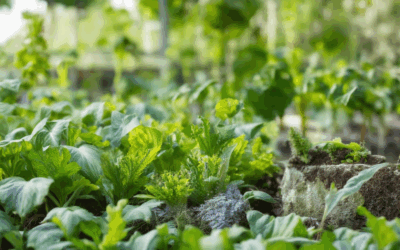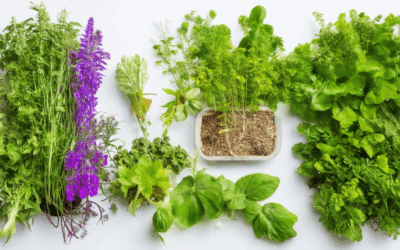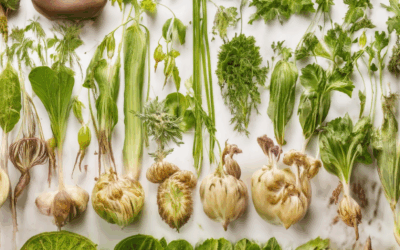Healthy soil is the foundation of any successful garden, whether you’re growing vegetables, flowers, or simply maintaining a lush lawn. Mastering backyard soil health is crucial for ensuring your plants thrive, but many homeowners overlook the importance of understanding and caring for their soil. In this article, we’ll explore everything you need to know to achieve and maintain healthy soil in your backyard, addressing common questions and providing practical solutions. From identifying signs of unhealthy soil to learning how to improve it through amendments and organic matter, we’ll cover the essential steps to ensure your garden soil is in peak condition. By understanding the basics of soil health, implementing effective testing methods, and adopting sustainable practices, you can create a thriving environment that supports robust plant growth. Whether you’re new to gardening or looking to refine your skills, this guide offers valuable insights to help you master backyard soil health and enjoy a bountiful garden year-round.
Key Takeaways
- Incorporate compost to boost nutrients and improve soil structure.
- Test and adjust soil pH levels to support optimal plant growth.
- Enhance soil fertility with natural amendments like green sand and liquid fertilizers.
- Improve soil texture and drainage using gypsum and adjust pH with dolomite lime.
- Apply soil amendments timely and monitor their impact on soil health annually.
- Integrate organic additions slowly to avoid nutrient overload and opt for natural fertilizers instead of chemicals.
- Utilize coffee grounds as a natural fertilizer and soil conditioner.
- Accelerate soil health improvement through cover cropping, mulching, and adding green manure.
How to Fix Bad Soil in Your Yard
To address poor soil conditions in your yard, follow these organized steps to restore and maintain healthy soil:
- Test Your Soil : Begin by conducting a soil test to determine pH levels and nutrient deficiencies. This ensures you understand the specific issues affecting your soil.
- Add Organic Matter : Incorporate compost, whether homemade or store-bought, to enhance soil fertility and structure. Apply a few inches around plants and consider mixing it thoroughly with existing soil.
- Aerate the Soil : Use an aeration fork or create holes with a shovel to improve airflow and prevent soil compaction, allowing roots to thrive.
- Install Drip Irrigation : Set up drip systems or rain barrels to promote efficient watering, ensuring deep root penetration and moisture retention.
- Apply Mulch : Cover areas with organic mulch (e.g., wood chips or leaves) to retain moisture, suppress weeds, and improve soil texture over time.
- Monitor and Adjust : Re-test soil pH and nutrient levels periodically to gauge progress and make necessary adjustments, such as adding lime for acidity or sulfur for alkalinity.
- Consider Local Amendments : Look for local sources of manure or worm castings to boost nutrients, supporting sustainable practices.
- Plant Native Species : Choose plants suited to your region to encourage healthier root development and soil improvement through decomposition.
By systematically addressing these aspects, you can transform your yard’s soil into a thriving environment for your plants. Consistent care and monitoring will yield long-term benefits for your garden.
Understanding the 5 Rules of Soil Health
Soil health is a cornerstone of sustainable agriculture and gardening. By understanding and implementing these five essential principles, you can enhance soil fertility, promote biodiversity, and ensure long-term productivity. Let’s delve into each rule and explore how they contribute to healthier soil ecosystems.
1. Soil Armor
Soil armor refers to the structural integrity of the soil, which includes its ability to retain water, support root systems, and resist erosion. Healthy soils are like living organisms, capable of absorbing and retaining moisture, which is crucial for plant growth. To maintain soil armor:
- Minimize tillage to reduce soil disruption
- Add organic matter regularly, such as compost or manure
- Plant cover crops during off-seasons to protect the soil
- Use mulch to retain moisture and regulate soil temperature
2. Minimizing Soil Disturbance
Excessive tilling, digging, or machinery use can disrupt soil structure, reducing its ability to function optimally. Healthy soils thrive when disturbed minimally:
- Avoid deep plowing or tillage
- Use precision agriculture techniques to minimize impact
- Rotate crops to allow soil to recover
- Consider alternative methods like lasagna gardening
3. Promoting Plant Diversity
Diverse plant systems contribute to a balanced ecosystem, supporting beneficial microorganisms and preventing soil degradation. Here’s how to encourage plant diversity:
- Plant a variety of vegetables, flowers, and trees
- Integrate nitrogen-fixing plants like legumes
- Allow certain weeds to grow naturally, as they play a role in nutrient cycling
- Use polyculture gardening methods
4. Continuous Living Cover
Keeping the soil covered with plants, mulch, or organic materials helps maintain a healthy environment. This principle ensures:
- Reduced soil compaction
- Consistent soil moisture levels
- Stable pH levels
- Protection from extreme temperatures
5. Livestock Integration
Integrating livestock, such as chickens, ducks, or cows, into your farming system benefits soil health by:
- Providing natural fertilizers through manure
- Churning the soil to aerate it
- Spread seeds naturally
- Consuming weeds and pests
By adhering to these five principles, you can create a resilient and productive soil ecosystem that supports thriving plants, a diverse wildlife population, and a sustainable agricultural system. Remember, healthy soil is the foundation of any successful gardening or farming venture, and these practices will ensure its longevity and productivity for years to come.
Learn more about soil health practices
How to Assess Your Yard Dirt for Gardening
To determine if your yard dirt is suitable for gardening, evaluate several key characteristics:
- Texture: Feel the dirt between your fingers. Sandy soil may drain quickly, while clay soil retains moisture. Loamy soil offers a balance.
- Color: Healthy soil typically appears dark and rich. Compare it to loamy soil for a reference.
- Odor: A slight earthy scent indicates healthy soil. Avoid soils with unpleasant odors.
- Structure: Squeeze the dirt; it should hold together slightly before crumbling. Poor structure may indicate compaction.
- pH Level: Most plants thrive in a pH range of 6-8. Test with a meter or observe plant health. Adjust with lime (raise pH) or sulfur (lower pH) if needed.
- Organic Matter: Look for decomposed leaves or compost. Add more if soil lacks organic material.
- Worm Presence: Healthy soil often hosts earthworms. Dig to check for their presence.
- Drainage: Water should drain evenly; pooling water indicates poor drainage.
- Location and Exposure: Consider sunlight and shade effects on soil moisture and plant requirements.
- Weeds: Examine for signs of weed seeds, indicating possible nutrient deficiencies.
For precise testing, use a soil test kit. Consult local gardening experts for regional advice. A healthy soil assessment ensures optimal gardening conditions, leading to thriving plants and a productive garden.
Improving Soil Health: Key Amendments and Practices
To enhance soil health, consider incorporating the following amendments thoughtfully, tailored to your specific soil type and needs:
Compost and Organic Matter
- Add compost, such as well-rotted manure or leaf mold, to enrich soil with nutrients and improve structure. Incorporate 1-2 inches around plants, avoiding application close to planting time.
- Consider organic matter like straw or composted cow manure to enhance moisture retention and reduce weeds. Aim for a balanced ratio based on your soil type.
Adjusting pH Levels
- Test soil pH using a kit to determine acidity or alkalinity. Apply lime if needed to raise pH levels, following package instructions to avoid over-alcalization.
- For acid-loving plants, add sulfur at a rate of 1-2 tablespoons per square foot, ensuring it’s well-integrated into the soil.
Nutrient Enhancements
- Broadcast green sand (micro-nutrients) and rock phosphate (phosphorus) over the garden area, working them into the soil. Apply annually, adjusting based on plant needs.
- Use fish emulsion or seaweed extract as liquid fertilizers, applying at recommended dilutions every 2-4 weeks during growing seasons to avoid plant burn.
Structure and Drainage Improvements
- Incorporate gypsum to improve soil structure and water infiltration, especially in clay soils. Till 2-3 inches into the soil before planting.
- Consider calcium magnesium borate (dolomite lime) for pH adjustment and calcium supply, applying based on soil test results.
Application Timing and Monitoring
- Apply most amendments before planting, allowing time for integration. Monitor soil health and adjust applications annually based on observed changes.
- Use protective gear when handling amendments like lime to avoid dust exposure.
Environmental Considerations
- Integrate amendments gradually to avoid nutrient overload, starting with smaller quantities and increasing as needed.
- Avoid chemical fertilizers to preserve soil health and sustainability.
By testing, applying, and monitoring these amendments, you can foster a healthier soil environment, supporting robust plant growth and ecological balance.
Are Coffee Grounds Good for Soil?
Coffee grounds are indeed beneficial for soil health and plant growth. As a natural organic material, they contribute essential nutrients and improve soil structure.
Benefits of Coffee Grounds for Soil
- Nutrient-rich: Coffee grounds are rich in nitrogen, phosphorus, and potassium, which are vital for plant growth.
- Improve soil structure: They add organic matter that enhances soil aeration and water retention capabilities.
- Natural pesticide: Coffee grounds can repel pests naturally, making them a safe alternative to chemical pesticides.
- Fertilizer alternative: They act as a natural fertilizer, providing plants with necessary nutrients without synthetic chemicals.
How to Use Coffee Grounds in the Garden
Composting coffee grounds is an effective way to integrate them into your garden:
- Spread a thin layer over the soil and work it in.
- Use them as a mulch to retain moisture and suppress weeds.
- Add to worm farms or compost bins to break down further into nutrient-rich humus.
For best results, incorporate coffee grounds into your planting beds or apply them directly around plants. Remember to use them in moderation, as excessive amounts can cause nitrogen burn.
Learn more about sustainable gardening practices to maximize the benefits of coffee grounds for your soil.
What is the fastest way to improve soil quality?
To enhance soil quality rapidly, focus on incorporating organic materials and sustainable practices. Here are proven methods:
- Compost Addition : Enhance soil structure and water retention by adding compost annually. It supplies essential nutrients and promotes microbial activity.
- Cover Cropping : Plant nitrogen-fixing crops like clover or vetch to protect soil over winter, reducing erosion and adding organic matter.
- Green Manure : Grow plants like ryegrass or buckwheat in fall to decompose and enrich the soil naturally before spring planting.
- Mulching : Apply thick layers of organic mulch (e.g., wood chips or leaves) to retain moisture, suppress weeds, and add organic carbon.
- Soil Testing and Adjustment : Test pH levels and amend with lime or sulfur if necessary to optimize plant growth conditions.
- Aeration : Incorporate well-rotted manure or worm castings to improve soil aeration and promote beneficial microorganisms.
- Waterwise Irrigation : Use drip irrigation to apply water directly to plant roots, minimizing runoff and enhancing nutrient absorption.
- Minimize Tilling : Avoid excessive tilling to preserve soil structure and organic matter, which supports healthier plant roots.
- Apply Slow-Release Fertilizers : Opt for balanced, slow-release fertilizers to provide consistent nutrition without frequent applications.
- Rotate Crops : Practice crop rotation to break pest cycles and maintain soil health by avoiding same-crop residues.
By combining these methods, you can significantly improve soil quality and support thriving plant growth. Remember, healthy soil leads to healthier plants and a more productive garden.








0 Comments